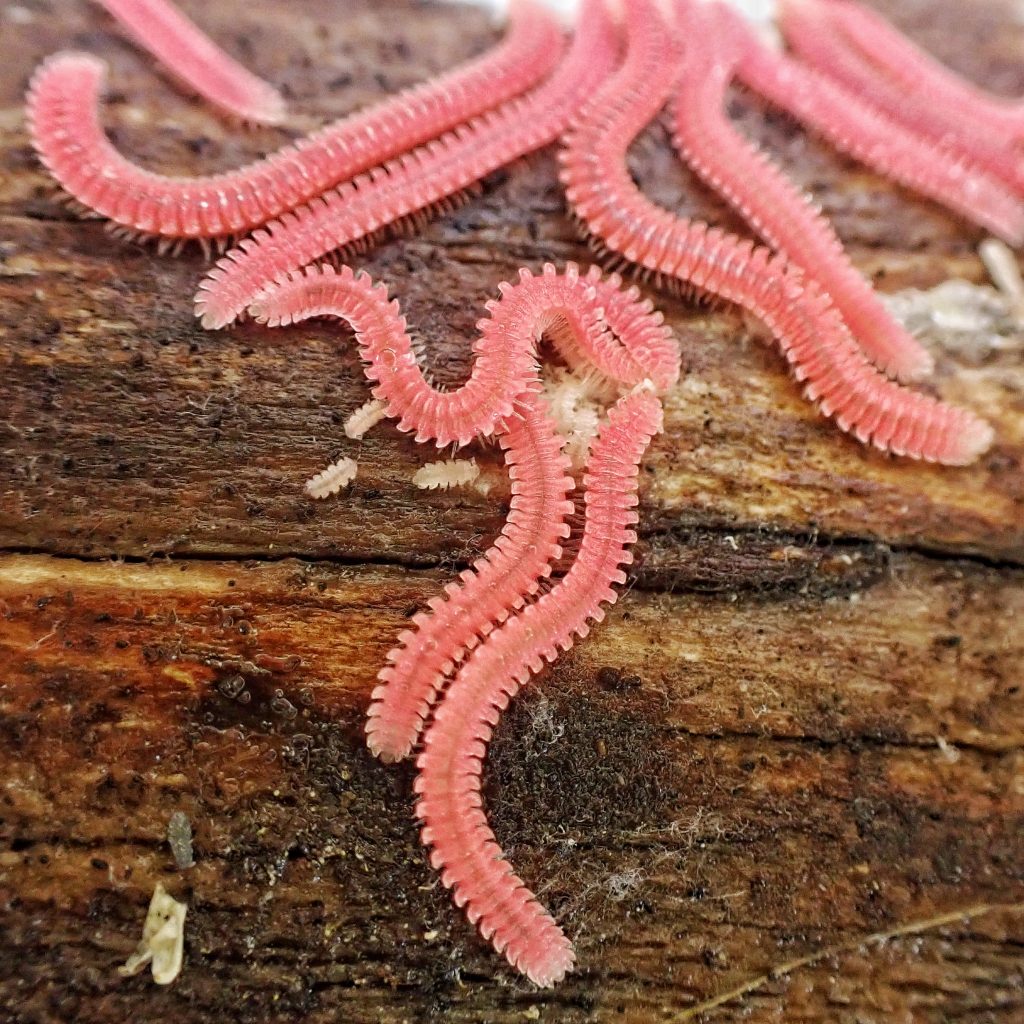
Finding these beautiful pink millipedes was the primary motivation for visiting the Medford area on my recent adventure, and, as mentioned in ‘Pivoting’, Sam McNally walked me right to a cluster of them within 50’ of the parking area. Sam has been posting intriguing photos of these eyeless, fungivorous millipedes on Facebook for the last couple years, and they really seemed like a bug I needed to see. He and I became Facebook friends because of a shared interest in millipedes and other less-than-sexy invertebrates who live in the dirt or the dark, but after our day of ‘pede hunting together I’d like to think we are actual friends now, although after 7 hours of listening to me pontificate on the opinions with which I am rife, he may feel differently.
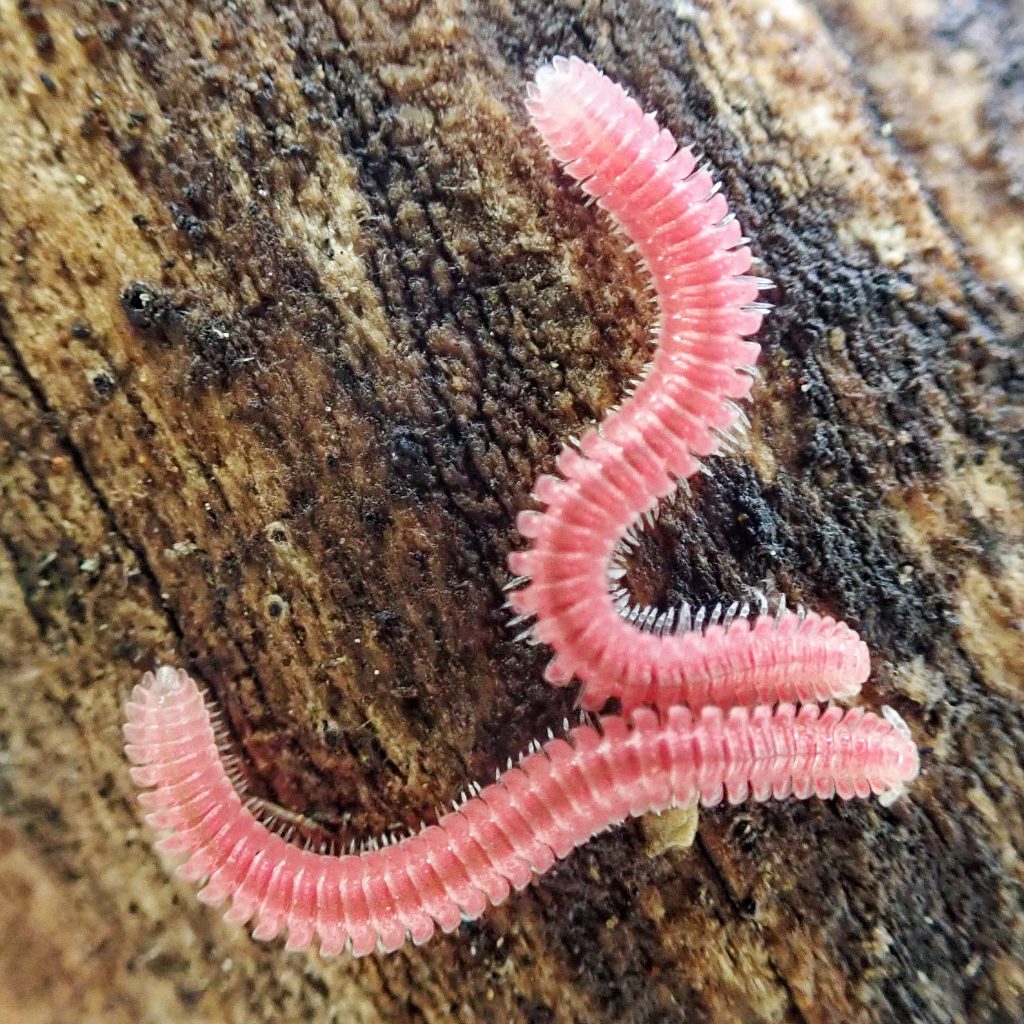
There isn’t much known about Ischnocybe plicata, and most of what I’ll write here is inferred from Wong’s study (2017) of Brachycybe lecontii from the eastern US, and Murikami’s study (1962) of the Japanese millipede Brachycybe (Bazillozonium) nodulosum (I apologize but I can’t seem to link to this paper), both of which are, like Ischnocybe plicata, members of the family Andrognathidae in the order Platydesmida.
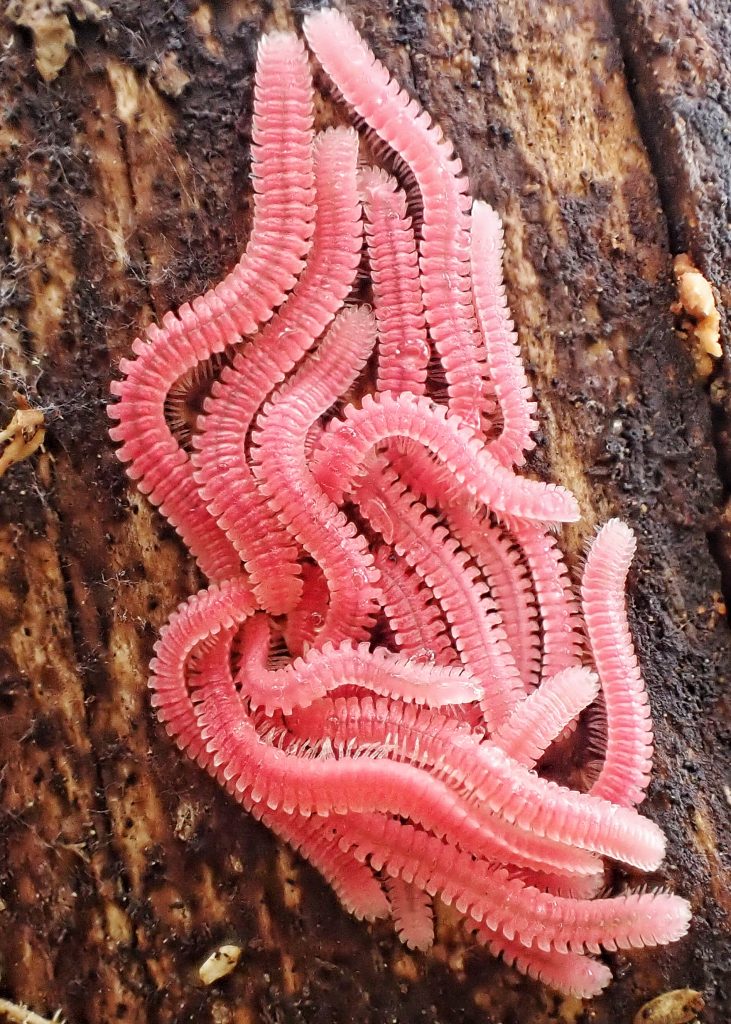
Andrognathids are usually found on and in decaying wood, and Sam says that the majority of I. plicata that he finds are not utilizing conifers, which was borne out by the fact that all of the dozens (maybe hundreds) that he showed me on our trip to East Applegate Ridge trail (and, as I also mentioned in ‘Pivoting’, Sam uncovered every last I. plicata we found that day) were found clinging upside down to the underside of either a chunk of madrone or white oak. They feed on the fungus that colonizes this decomposing wood.
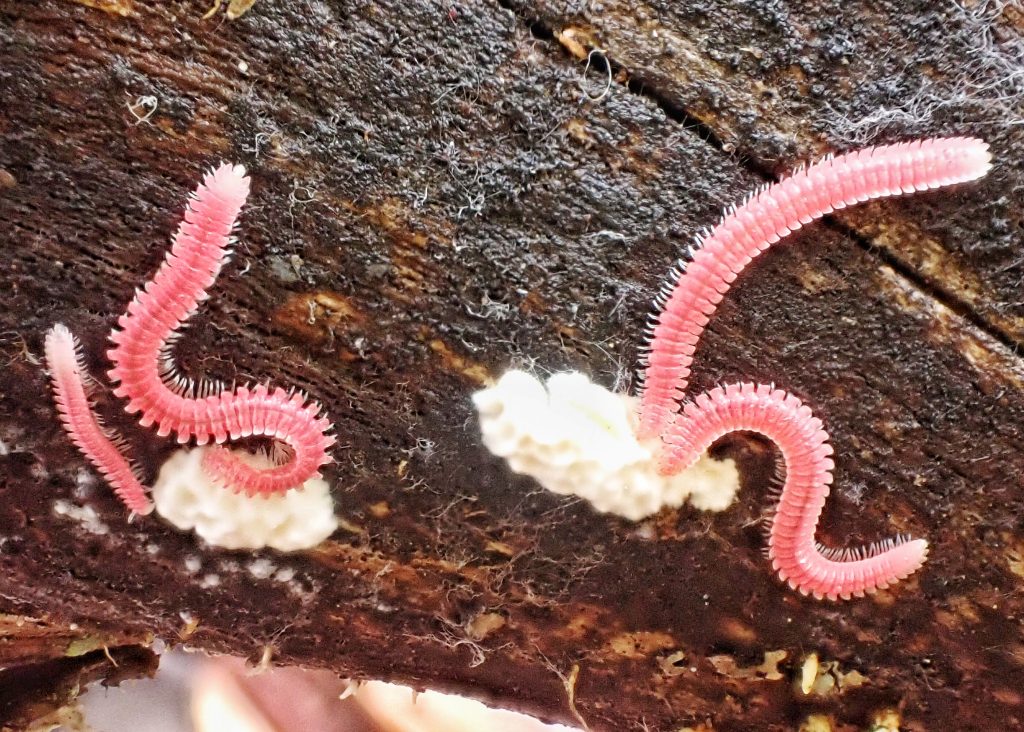
They are sub-social (but not eusocial, since they lack a caste system and all adults are able to procreate), meaning that they are often found in groups, and even intertwined, but they don’t rely on other members of the group for their survival. These may be family groups, since there are often multiple different instars as well as adults in the group, but it doesn’t appear that this has been studied. The groups or colonies of I. plicata that we found were not engaging in the pinwheel formation that they talk about for Brachycybe, but they did contain both juveniles and adults.
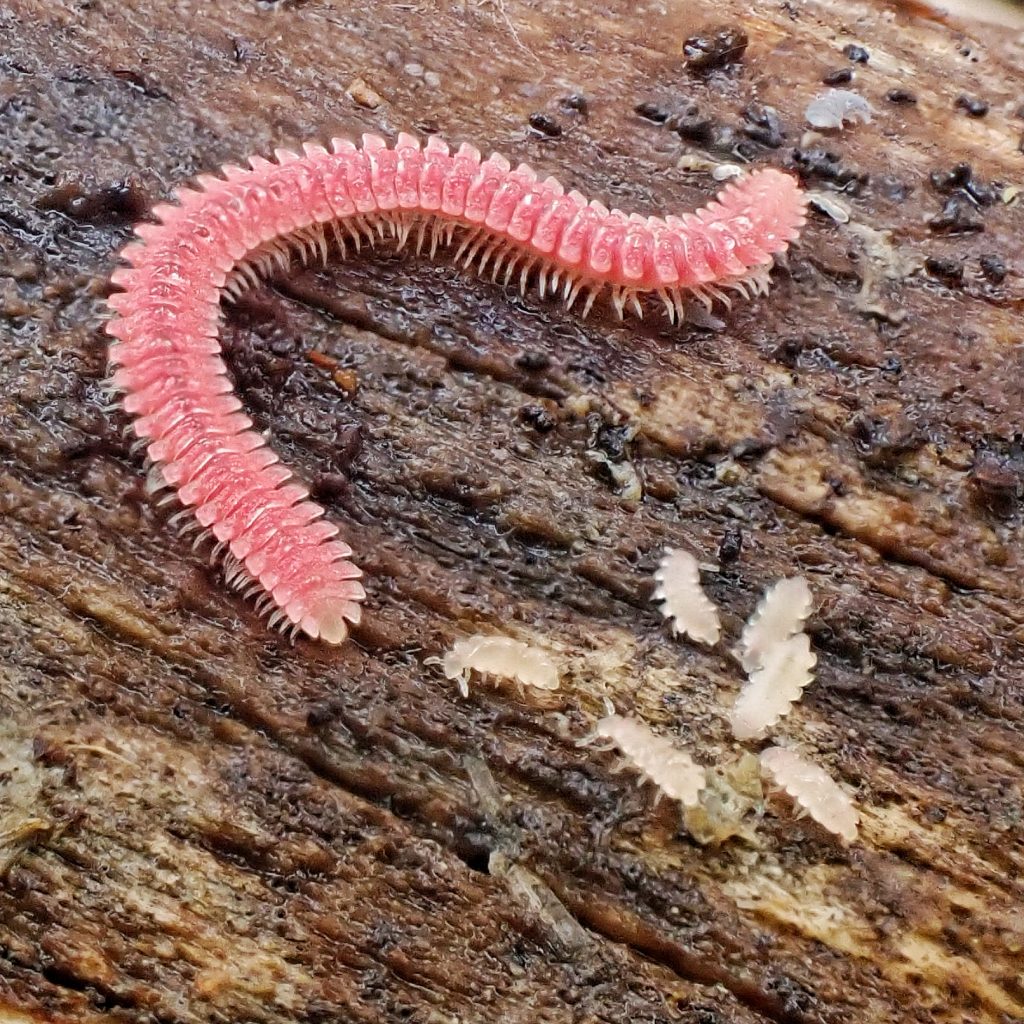
Members of the family Andrognathidae (as well as other platydesmidans) are known to engage in parental care of eggs. In most species it is the male that does the brood guarding, though it doesn’t appear that this has yet been confirmed for I. plicata. This brood guarding is done by wrapping the posterior section of the millipede around the clutch of eggs. They will continue to carry these eggs even when disturbed or fleeing a threat, and if separated from the clutch will attempt to find them. This urge to protect the eggs is so strong that they sometimes have been found to have gathered in and guarded eggs from another millipede. But as soon as the eggs begin hatching they are abandoned, and care of juveniles has not been observed. This brooding appears to be critical for the eggs, and both Wong and Murikami found that unprotected eggs had nearly %100 mortality.
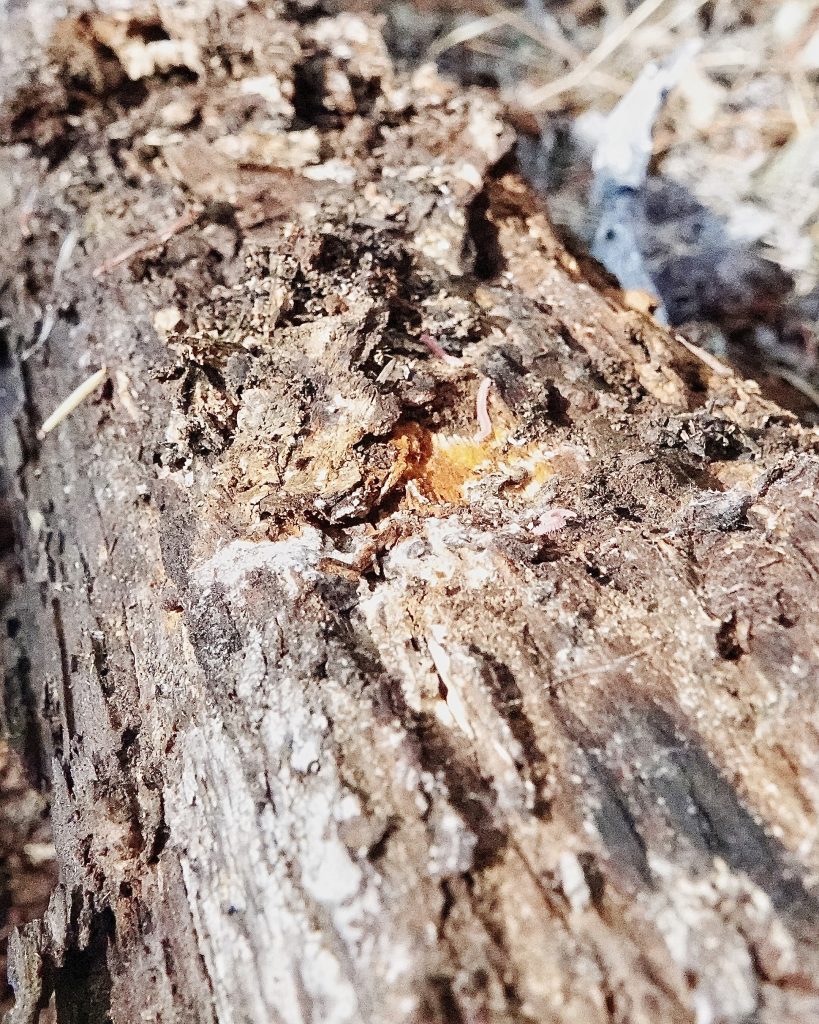
It is almost certain that I. plicata excrete chemical defenses from the repugnatorial glands located on each of the segments to the rear of segment 6, and it is possible that it is a form of deoxybuzonamine, as that is known from other andrognathids, and is known to be repellent to ants, which are a primary predator of Platydesmids and other millipedes. All in all, these are quite fascinating creatures, and I look forward to learning more about them when the day comes that someone takes the time to explore their full natural history.
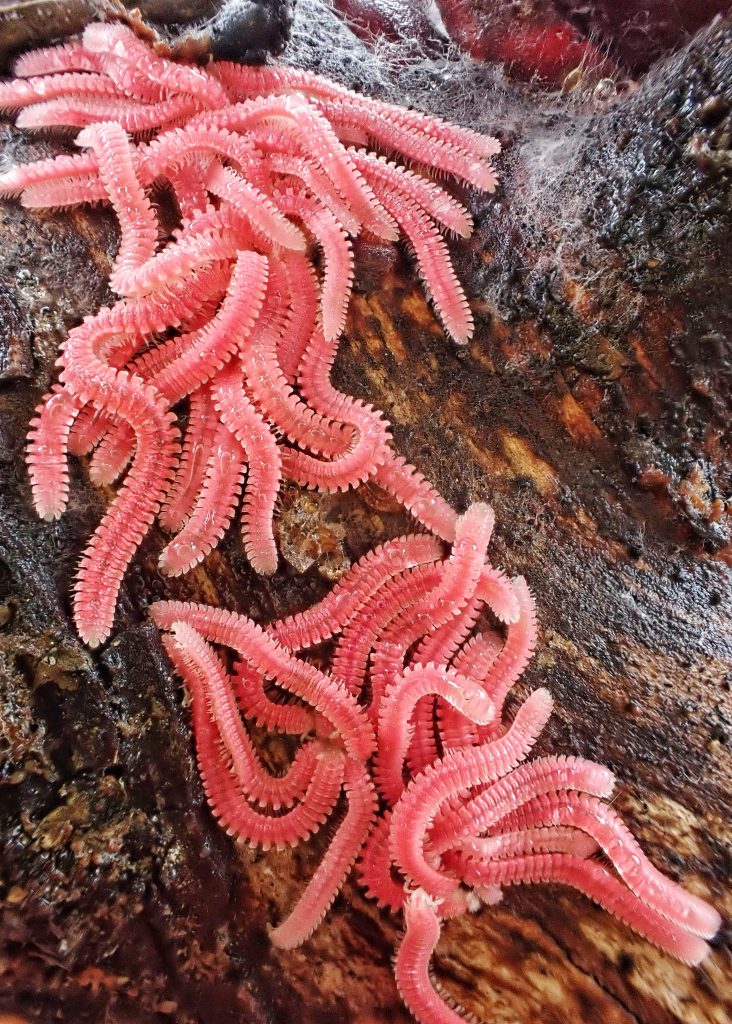
Description-Small (adults are 15-19mm long by 1.5-1.9mm wide and the ratio between length and width is 10-12 to 1) pink, eyeless millipedes with 47-55 segments, hairless dorsal surfaces, narrow, knobbed sternal plates between the leg pairs.
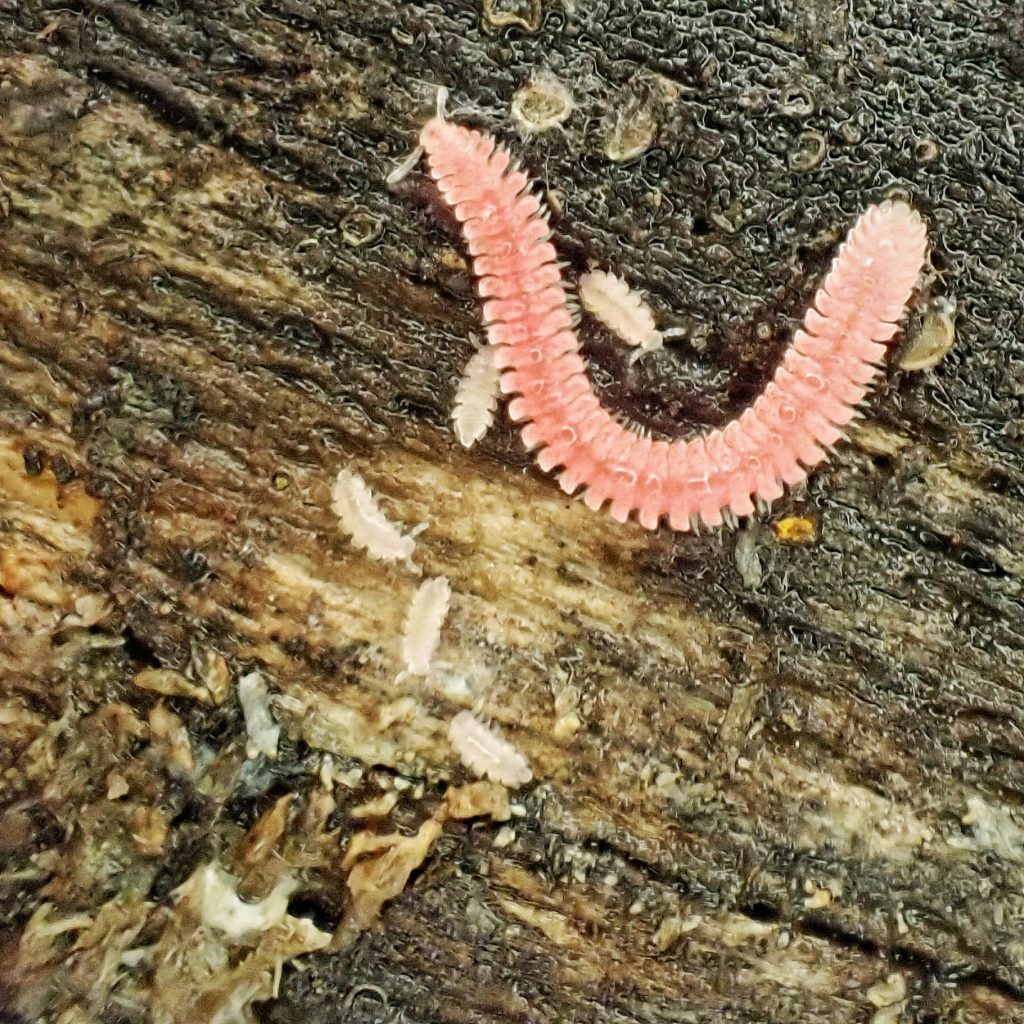
Similar species– For us neophytes, identification of millipedes even to order requires at least a hand lens or even better optics, or a very clear, closeup photo of salient characteristics, and a good key, such as this one; members of Platydesmidae, the other family in the order Platydesmida, have wide sternal plates between the leg pairs, and those plates lack a knob like process; in the family Andrognathidae the genus Brachycybe is much wider (2.5-4mm) and is 5-10 times as long as wide; members of Gosodemus are 14-20 times as long as wide; Mitocybe and Andrognathus have hairy segments in the mid-body region.
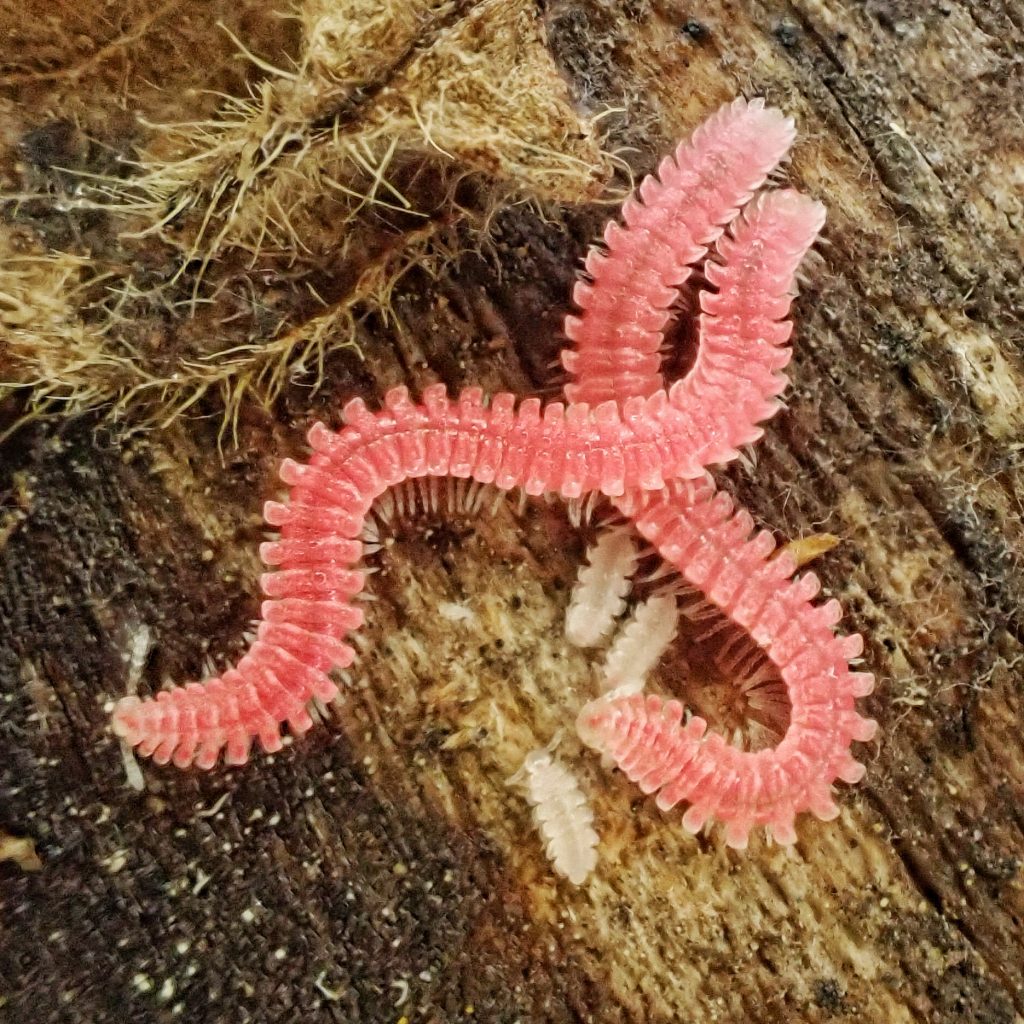
Habitat– In and under logs in moist to mesic forests; rare but widespread.
Range-Sw Oregon, n California and central Idaho.
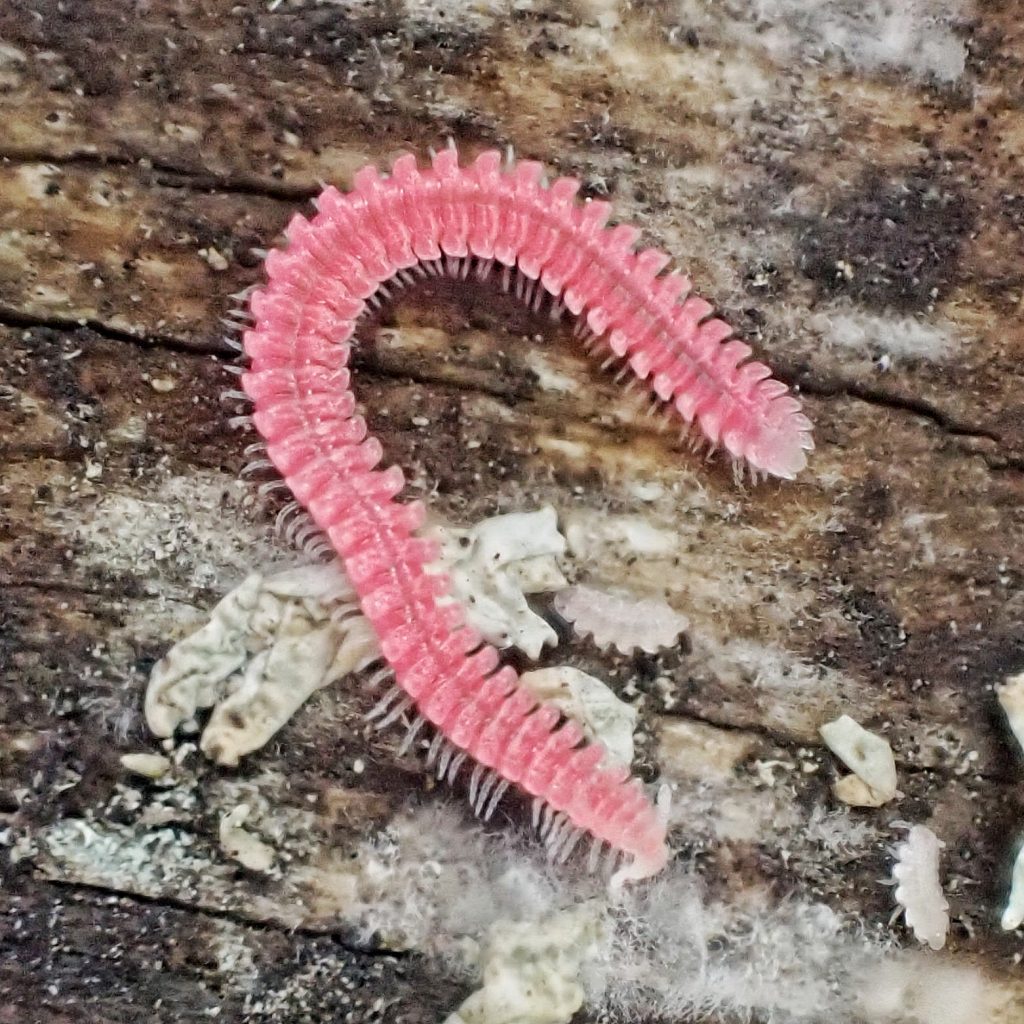
Eats-Fungi
Eaten by-Probably ants, especially on early instars that haven’t developed chemical defenses, and probably other insectivores that can find them.

Adults active-It seems likely that this species is mostly dormant from summer to early fall, and active the rest of the year during the wetter months.
Life cycle-Based on the studies of Brachycybe spp. it seems likely that ovipositing happens in mid to late spring, eggs are laid in clutches of 20-80, and they take 3-5 weeks to hatch; probably has 6-8 instars, adds 2-8 segments per moult, and legs are formed on the segments of the previous moult during the next instar; I cannot ascertain how long the entire larval process takes to complete.
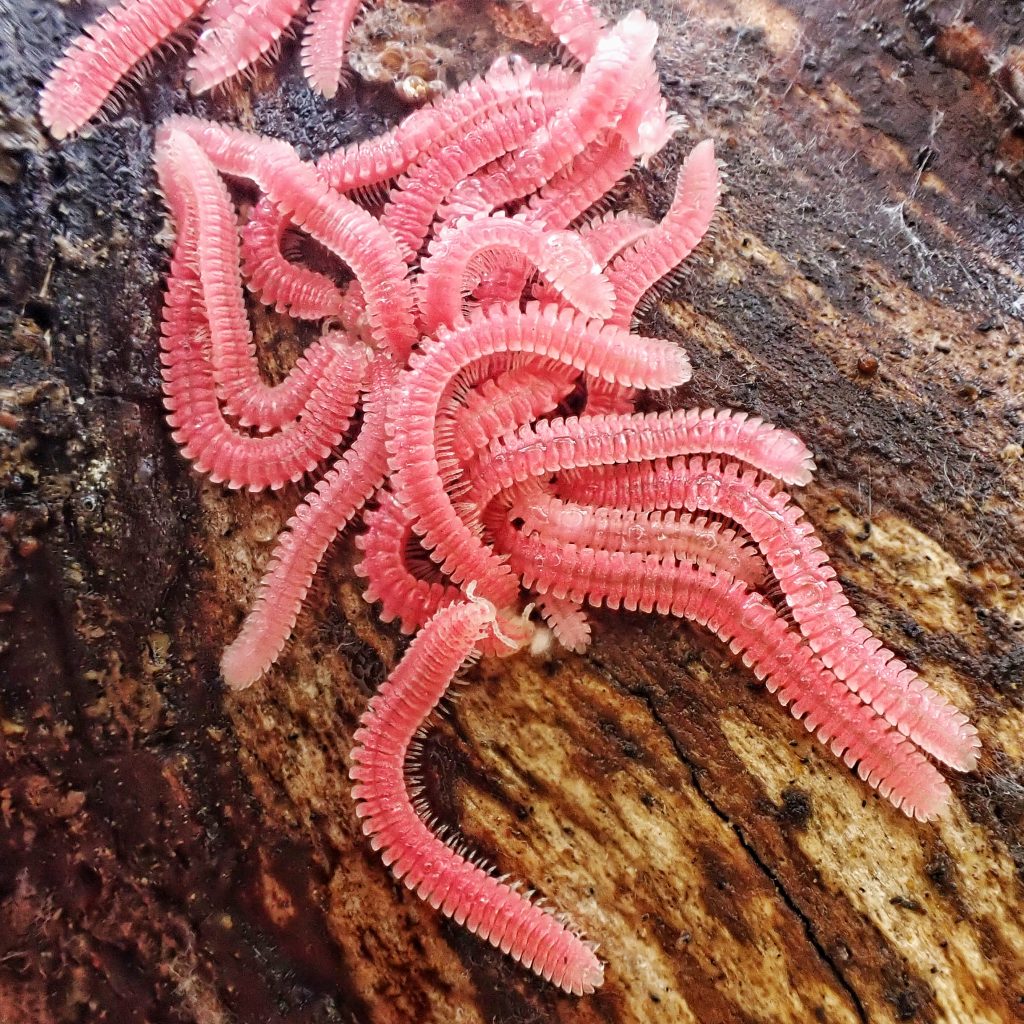
Etymology of names–Ischnocybe comes from the Greek words for ‘reduced/withered’ and ‘mushroom head/cap’; according to Cook and Loomis, the original describers of this genus and species, “the generic name alludes to the more slender body with the carinae smaller and the anterior subsegments more exposed than in Brachycybe”. The specific epithet plicata is from the Latin word for folded, and may refer to ring-shaped folds in the carinae, though Cook and Loomis do not verify this.
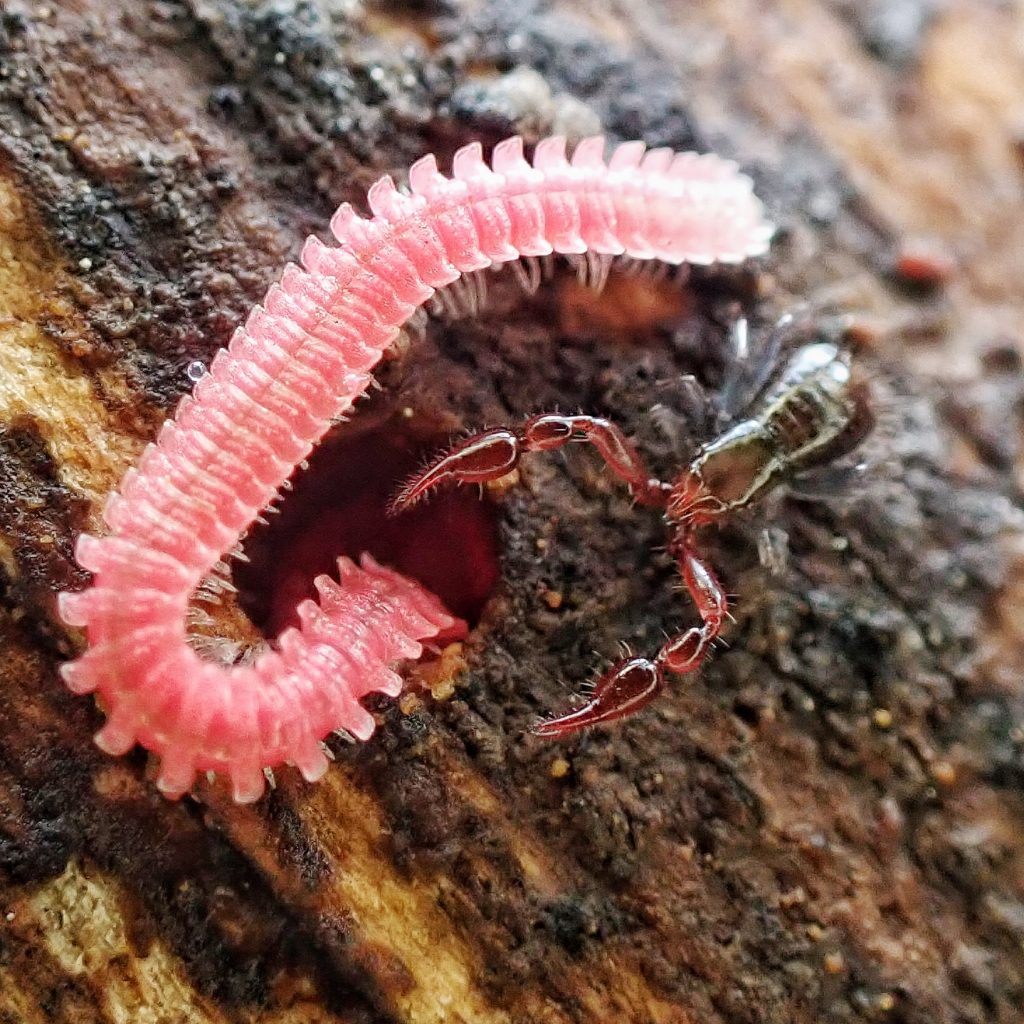
https://vtechworks.lib.vt.edu/bitstream/handle/10919/82027/Wong_VL_T_2018.pdf?sequence=1
https://bugguide.net/node/view/1783596
https://www.fieldmuseum.org/sites/default/files/millipedekeyenglish.pdf
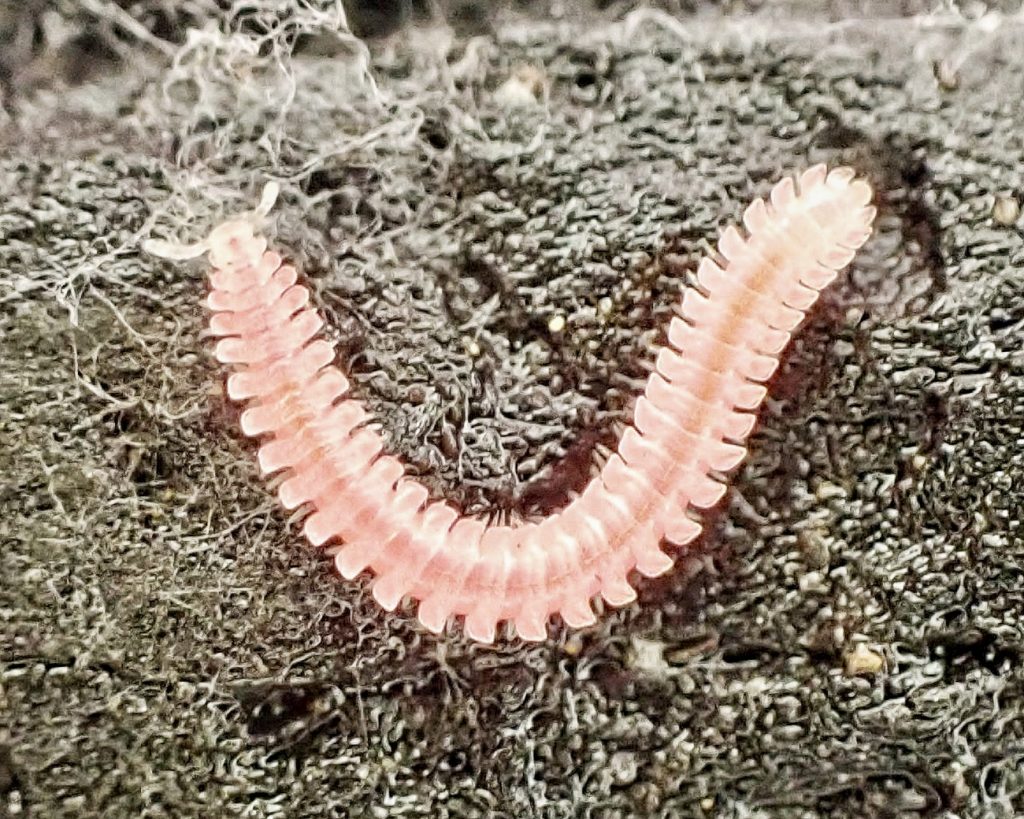
Beautiful photos, Dan! I didn’t know such beautiful pink millipedes were in Oregon, until now 🤩!
Thanks, Caitlin! There are some others in our region that are pink, and in fact all of the Andrognathids tend to be at least pinkish. But I. plicata is spectacular.
While others post pictures of unusual birds or animals on FB you post the ordinary that is extraordinary. Fascinating. Thanks
Thank you Kim! The world in a drop of dew, you know…
These are so beautiful. I can even see the antennae at this scale. I keep thinking about all the details that I would miss with my middle-aged eyes, especially if the weather was poor. Thank goodness for technology. Great shot on that pseudoscorpion too. Thank you for taking the time to highlight this unique species.
Thanks for your appreciation, Jerry!